Introduction
The culinary landscape of Bahawalpur offers a vibrant tapestry of flavors, aromas, and traditions that define the essence of food in Bahawalpur. Nestled in the heart of Pakistan, this region boasts a rich culinary heritage steeped in history and cultural influences, captivating both locals and travelers with its diverse and tantalizing gastronomy.
As one delves into the realm of food in Bahawalpur, they embark on a sensory journey through centuries-old recipes, infused with the distinctive flavors of this land. The fusion of Mughal, Persian, and local Punjabi influences has bestowed upon Bahawalpur a unique gastronomic identity that celebrates diversity and tradition in every dish.
From the bustling streets adorned with fragrant spice stalls to the serene corners housing traditional eateries, every nook and cranny echoes the tales of the region’s culinary evolution. It’s a mosaic of flavors brought to life through carefully crafted recipes passed down through generations, preserving the authenticity and soul of Bahawalpur cuisine.
In exploring food in Bahawalpur, one encounters a splendid array of delicacies, from succulent Balochi Sajji to aromatic Nihari, each dish narrating a story of its origin and significance. The culinary prowess of Bahawalpur lies not just in the ingredients or cooking techniques but in the cultural anecdotes and traditions woven into every bite.
This blog seeks to unravel the mystique behind the culinary wonders of Bahawalpur, delving into the history, ingredients, local sourcing practices, and cultural nuances that make the food in this region a tapestry of flavors and traditions. Join us on this gastronomic expedition as we unravel the secrets and nuances of “food in Bahawalpur,” offering insights, tips, and a delectable journey through this enchanting culinary realm.
List of 30 Top Food in Bahawalpur
| S. No | Name of Food/Dish | Category | Price Range (USD & EUR) | Main Ingredients (if available) |
|---|---|---|---|---|
| 1 | Sajji | Meat dish | $15-$35 USD, €12-€30 EUR | Whole roasted lamb/chicken |
| 2 | Bhindi Gosht | Meat dish | $12-$25 USD, €10-€20 EUR | Okra, meat |
| 3 | Cholay | Veg dish | $8-$15 USD, €7-€12 EUR | Chickpeas, spices |
| 4 | Kheer | Sweet | $5-$12 USD, €4-€10 EUR | Rice, milk, sugar |
| 5 | Doodh Pati Chai | Beverage | $2-$5 USD, €2-€4 EUR | Tea, milk, sugar |
| 6 | Malai Boti | Meat dish | $10-$20 USD, €8-€16 EUR | Creamy chicken cubes |
| 7 | Aloo Bukhara Chutney | Condiment | $4-$8 USD, €3-€7 EUR | Plum, spices |
| 8 | Balochi Sajji | Meat dish | $18-$40 USD, €15-€35 EUR | Whole roasted lamb/chicken |
| 9 | Meethi Tikki | Sweet | $7-$15 USD, €6-€12 EUR | Sweet potato, spices |
| 10 | Karahi | Meat dish | $10-$25 USD, €8-€20 EUR | Meat, tomatoes, spices |
| 11 | Reshmi Kebab | Meat dish | $12-$28 USD, €10-€24 EUR | Minced meat, spices |
| 12 | Dahi Bhallay | Savoury | $5-$10 USD, €4-€8 EUR | Lentil balls, yogurt |
| 13 | Khichdi | Savoury | $6-$12 USD, €5-€10 EUR | Rice, lentils, spices |
| 14 | Rabri | Sweet | $8-$18 USD, €7-€15 EUR | Condensed milk, sugar |
| 15 | Daal Chaawal | Savoury | $7-$14 USD, €6-€12 EUR | Lentils, rice |
| 16 | Aloo Paratha | Veg dish | $4-$10 USD, €3-€8 EUR | Potato, wheat flour |
| 17 | Qeema Naan | Bread | $6-$14 USD, €5-€12 EUR | Bread, minced meat |
| 18 | Saag | Veg dish | $9-$20 USD, €8-€17 EUR | Leafy greens, spices |
| 19 | Sweets from Chaman Ice Cream | Sweet | $5-$15 USD, €4-€13 EUR | Various sweets |
| 20 | Aloo Tikki Chaat | Savoury | $5-$12 USD, €4-€10 EUR | Potato patties, spices |
| 21 | Zarda | Sweet | $6-$14 USD, €5-€12 EUR | Rice, sugar, nuts |
| 22 | Fish Curry | Seafood | $15-$30 USD, €12-€25 EUR | Fish, spices |
| 23 | Haleem | Savoury | $8-$18 USD, €7-€15 EUR | Wheat, barley, meat |
| 24 | Fruit Chaat | Savoury | $5-$12 USD, €4-€10 EUR | Mixed fruits, spices |
| 25 | Gajar Ka Halwa | Sweet | $7-$15 USD, €6-€12 EUR | Carrot, milk, sugar |
| 26 | Nihari | Meat dish | $12-$30 USD, €10-€25 EUR | Slow-cooked meat, spices |
| 27 | Biryani | Savoury | $10-$25 USD, €8-€20 EUR | Rice, meat/vegetables |
| 28 | Puri | Bread | $3-$8 USD, €2-€7 EUR | Fried bread |
| 29 | Chapli Kebab | Meat dish | $8-$18 USD, €7-€15 EUR | Minced meat, spices |
| 30 | Chicken Tikka | Meat dish | $10-$22 USD, €8-€18 EUR | Marinated chicken |
| S. No | Name of Food/Dish | Category | Price Range (USD & EUR) | Main Ingredients (if available) |
Note: The price range provided is approximate and may vary depending on the restaurant or vendor.
Sajji: A signature dish of Bahawalpur, Sajji is a whole lamb or chicken marinated in a blend of spices, including salt, red chili powder, and sometimes yogurt or lemon juice. It’s skewered and roasted over an open flame or in a tandoor until tender and flavorful. The slow cooking process ensures the meat remains juicy while the spices infuse it with a rich taste.
Bhindi Gosht: A delectable combination of okra (bhindi) and tender chunks of meat (typically beef or mutton) cooked together with onions, tomatoes, and a mix of aromatic spices. The okra is often pan-fried separately to reduce its sliminess before being combined with the meat and spices, creating a savory and slightly tangy dish.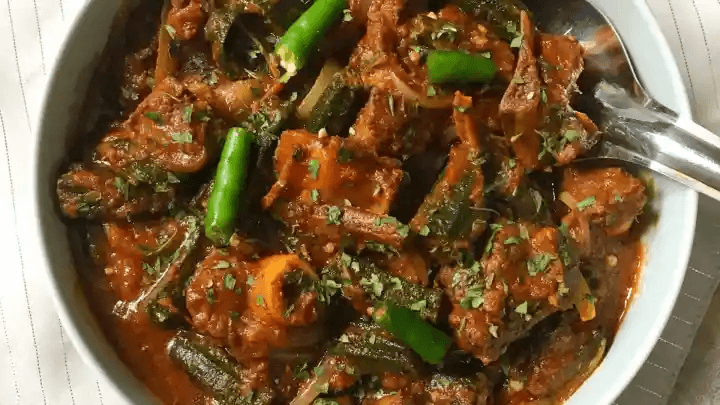
Cholay: A popular vegetarian dish made from chickpeas cooked with a blend of spices like cumin, coriander, garam masala, and ginger-garlic paste. The chickpeas are simmered in a thick, flavorful gravy made from tomatoes, onions, and aromatic spices, resulting in a hearty and spicy dish often enjoyed with bread or rice.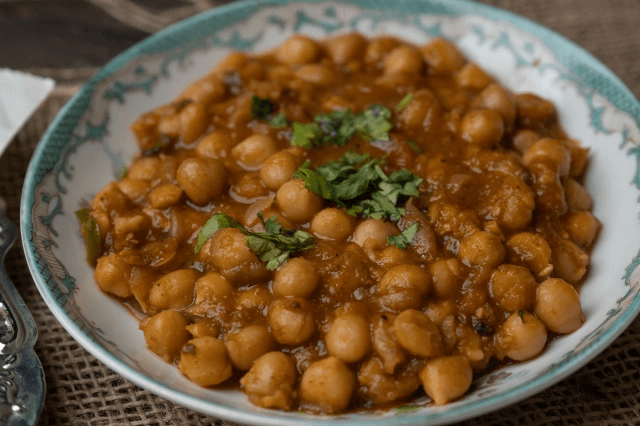
Kheer: A traditional rice pudding made by simmering rice in milk and sweetened with sugar or condensed milk. It’s flavored with cardamom, and saffron, and sometimes garnished with nuts like almonds, cashews, or pistachios. Kheer is often served chilled and is a popular dessert during festive occasions.
Doodh Pati Chai: A rich and creamy tea prepared by brewing loose black tea leaves in milk along with water and a blend of spices such as cardamom, cinnamon, and sometimes cloves. The tea is boiled until it reaches a strong and aromatic consistency, offering a comforting and flavorful beverage commonly served in small cups or glasses.
Malai Boti: This dish features marinated chunks of chicken or beef, often tenderized in a mixture of yogurt, cream, garlic, ginger, and various spices like cumin, coriander, and chili powder. The meat is skewered and grilled until succulent and charred, offering a creamy and mildly spicy flavor.
Aloo Bukhara Chutney: A tangy-sweet chutney made from plums (Aloo Bukhara) cooked with sugar, vinegar, and a mix of spices like cumin, red chili powder, and ginger. It’s simmered until the plums break down and thicken into a flavorsome sauce, often served as a condiment with savory dishes.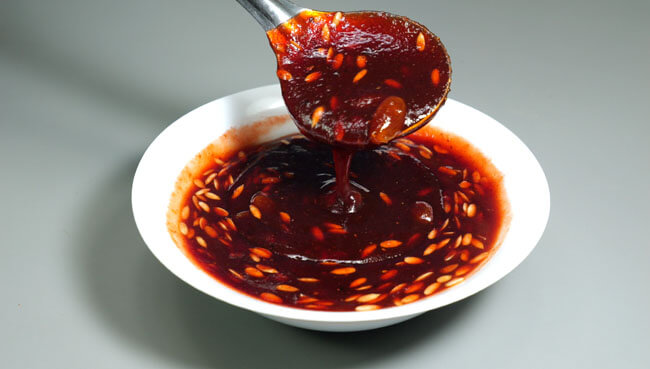
Meethi Tikki: These sweet and savory potato patties are made by mixing mashed potatoes with a blend of spices, including cumin, coriander, and chili powder, along with sugar or jaggery for sweetness. The mixture is shaped into patties and pan-fried until golden brown, creating a crispy exterior and a soft, flavorful interior.
Karahi: A savory and aromatic dish cooked in a rounded, heavy-bottomed cooking pot known as a karahi. It typically features meat (often chicken or mutton) cooked with tomatoes, onions, garlic, and a blend of spices like cumin, coriander, and garam masala. The dish is known for its rich flavor and is often garnished with fresh cilantro before serving.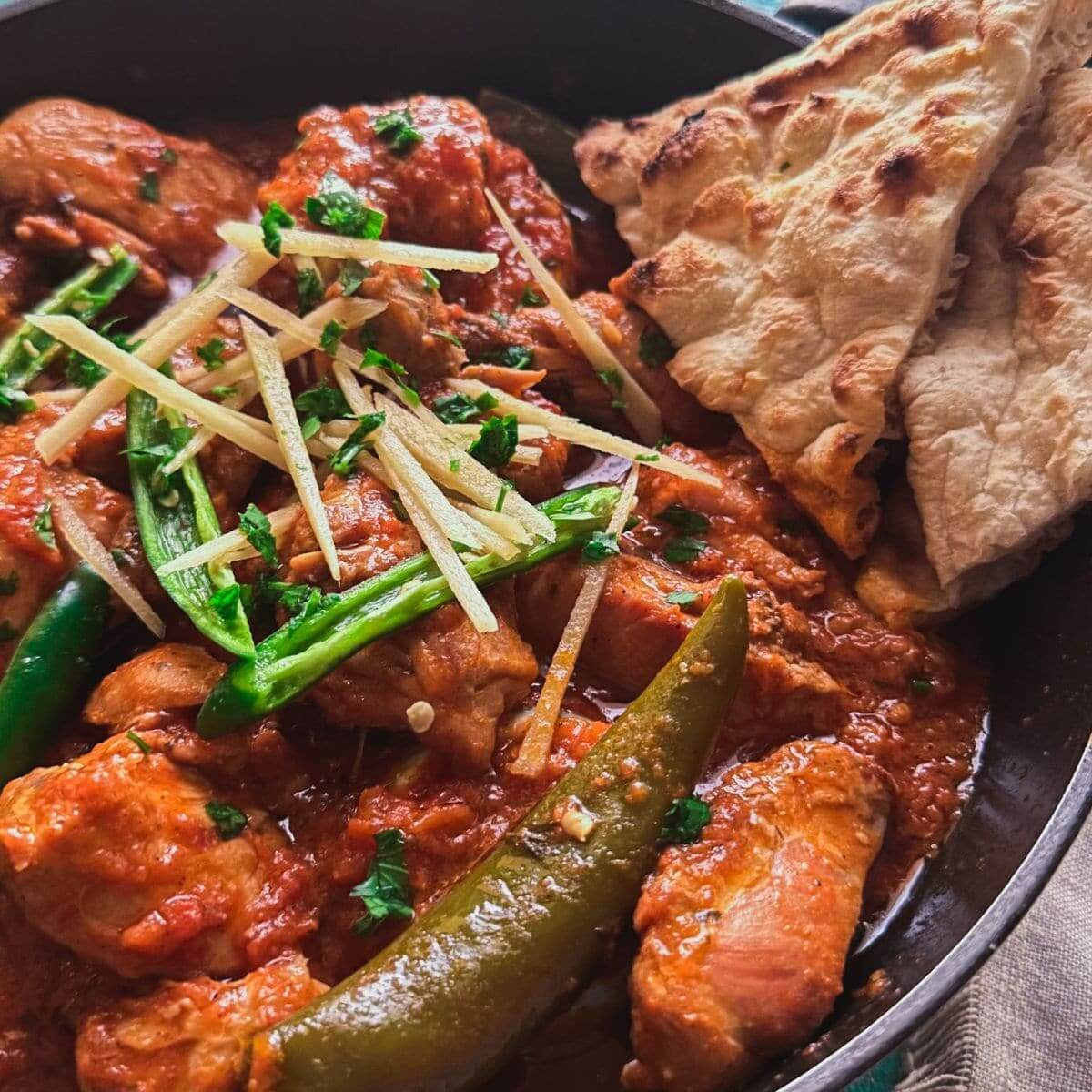
Reshmi Kebab: These kebabs are made by marinating minced meat (usually chicken or beef) with a mixture of yogurt, cream, ginger-garlic paste, and spices such as paprika, coriander, and cardamom. The mixture is then shaped into elongated kebabs and grilled or pan-fried until they are tender and have a slightly crispy exterior.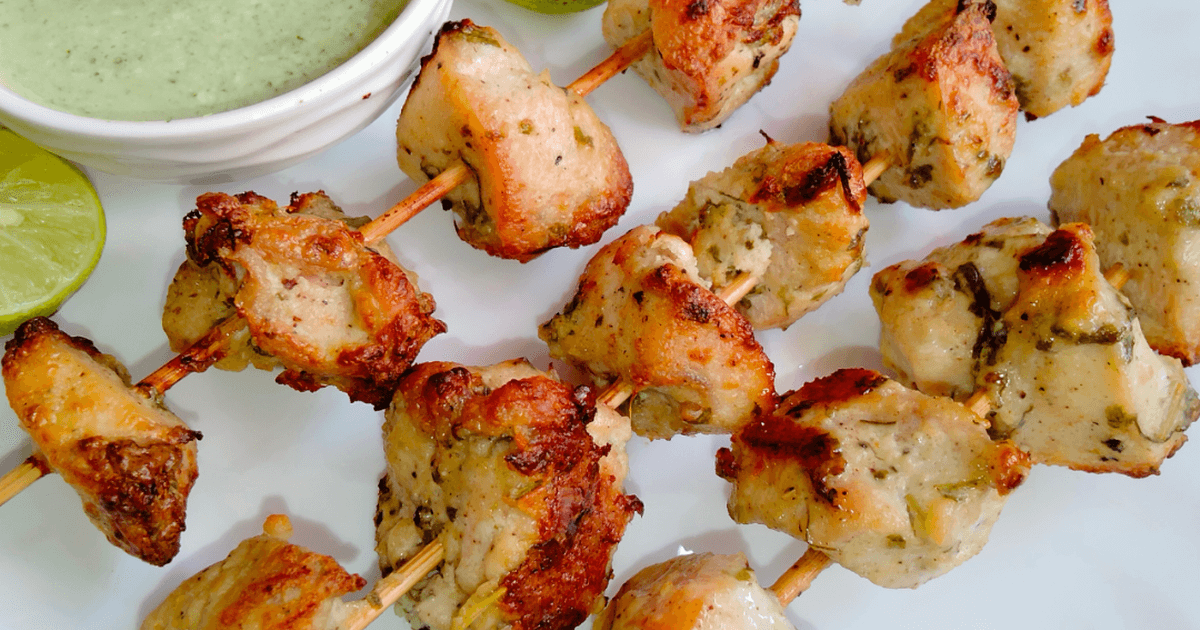
Dahi Bhallay: A popular street food and snack consisting of lentil or gram flour balls that are soaked in water and then served with yogurt, tamarind chutney, and a mix of spices like cumin, chaat masala, and chili powder. The combination of tangy yogurt and sweet-spicy chutney over soft lentil balls creates a burst of flavors and textures.
Khichdi: A comforting one-pot meal made by cooking rice and lentils together with various spices like cumin, turmeric, and bay leaves. It’s often garnished with caramelized onions and served with a dollop of ghee or clarified butter, providing a wholesome and flavorful dish.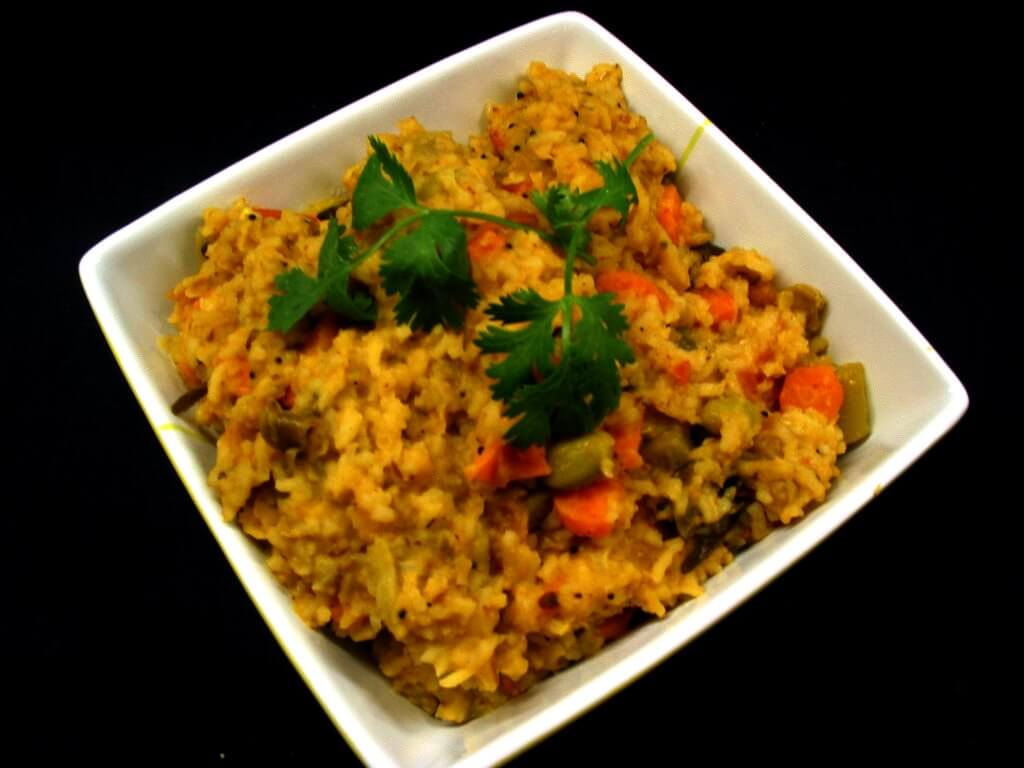
Rabri: A rich and creamy dessert made by reducing milk over low heat until it thickens, and layers of cream form on top. It’s sweetened with sugar and flavored with cardamom, and saffron, and sometimes garnished with nuts like almonds or pistachios. Rabri is served chilled and is a delightful treat on festive occasions.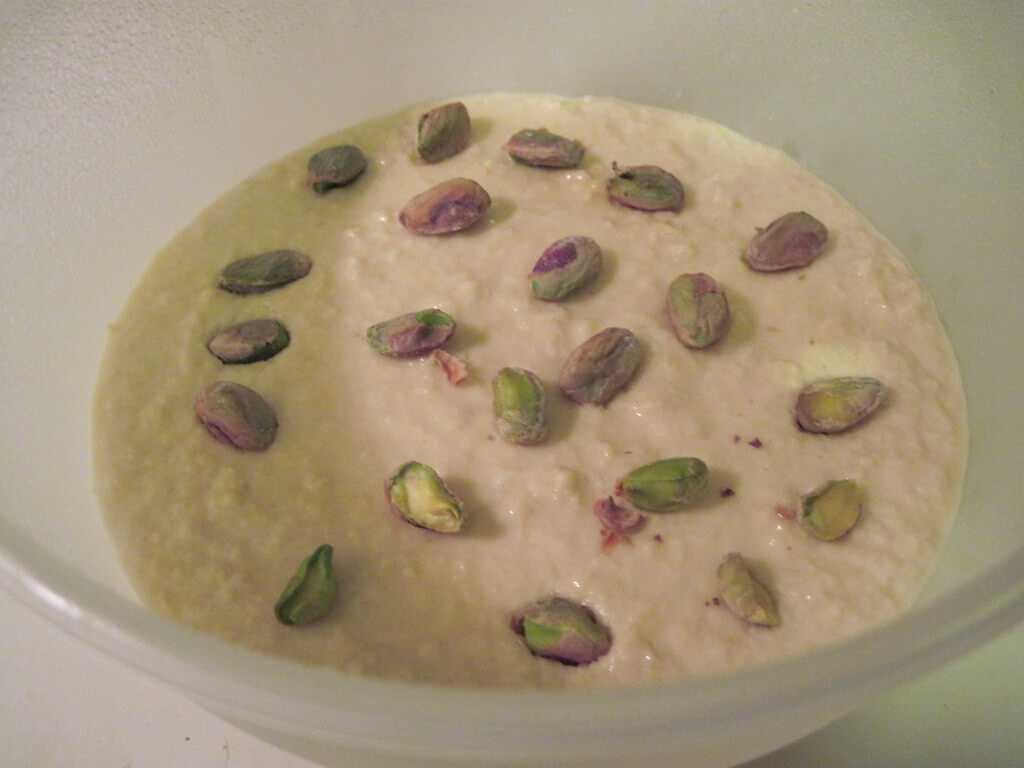
Daal Chaawal: A simple yet delicious dish consisting of lentils (daal) cooked with aromatic spices and served alongside steamed rice (chaawal). The lentils are often tempered with onions, garlic, cumin seeds, and red chili powder, providing a satisfying and comforting meal.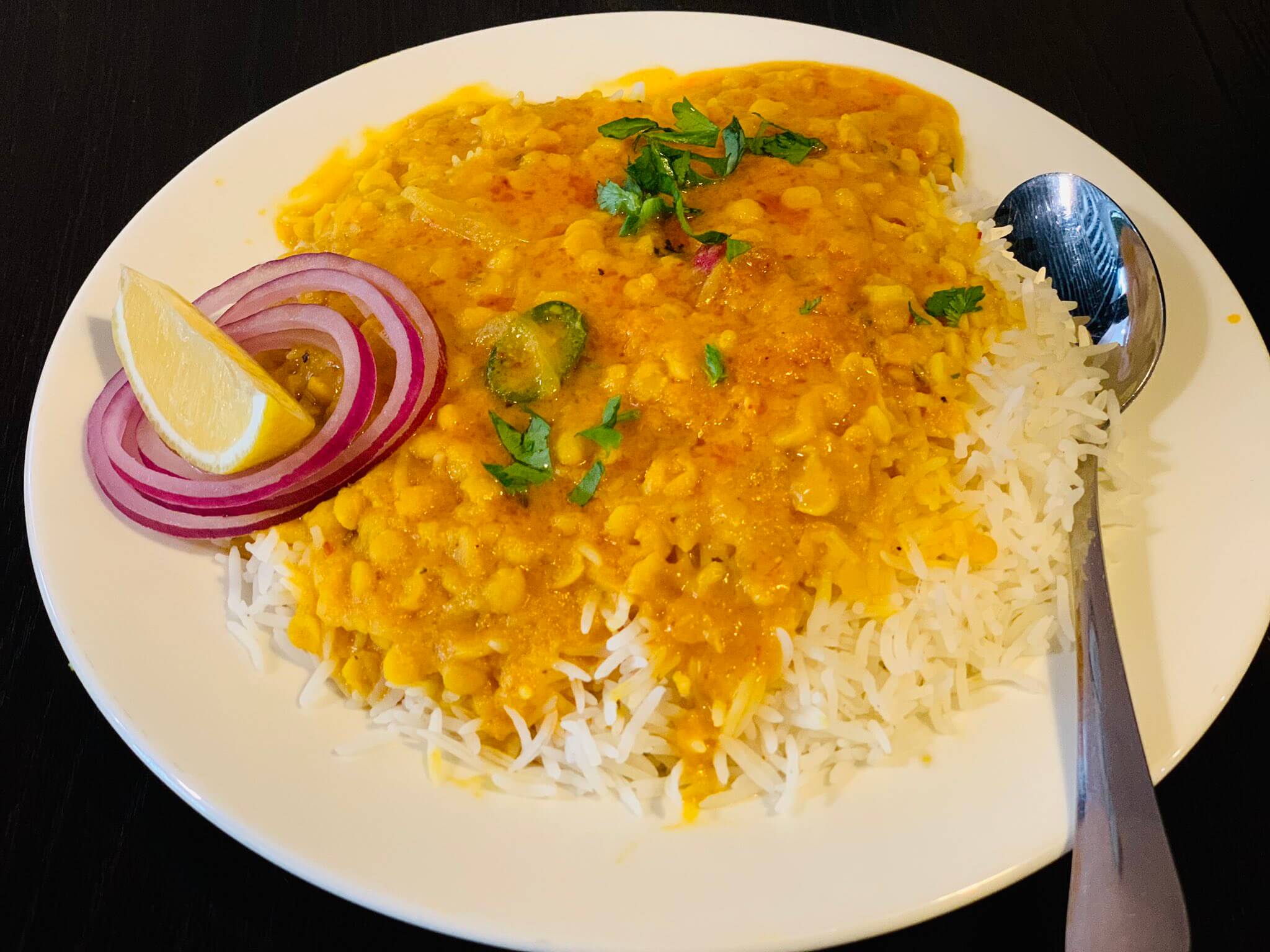
Aloo Paratha: A popular stuffed flatbread where a mixture of mashed potatoes, spices like cumin, coriander, and chili powder, along with herbs like cilantro, is stuffed into whole wheat dough and then rolled out and cooked on a griddle with ghee or oil until golden brown. It’s typically served with yogurt, pickles, or chutney.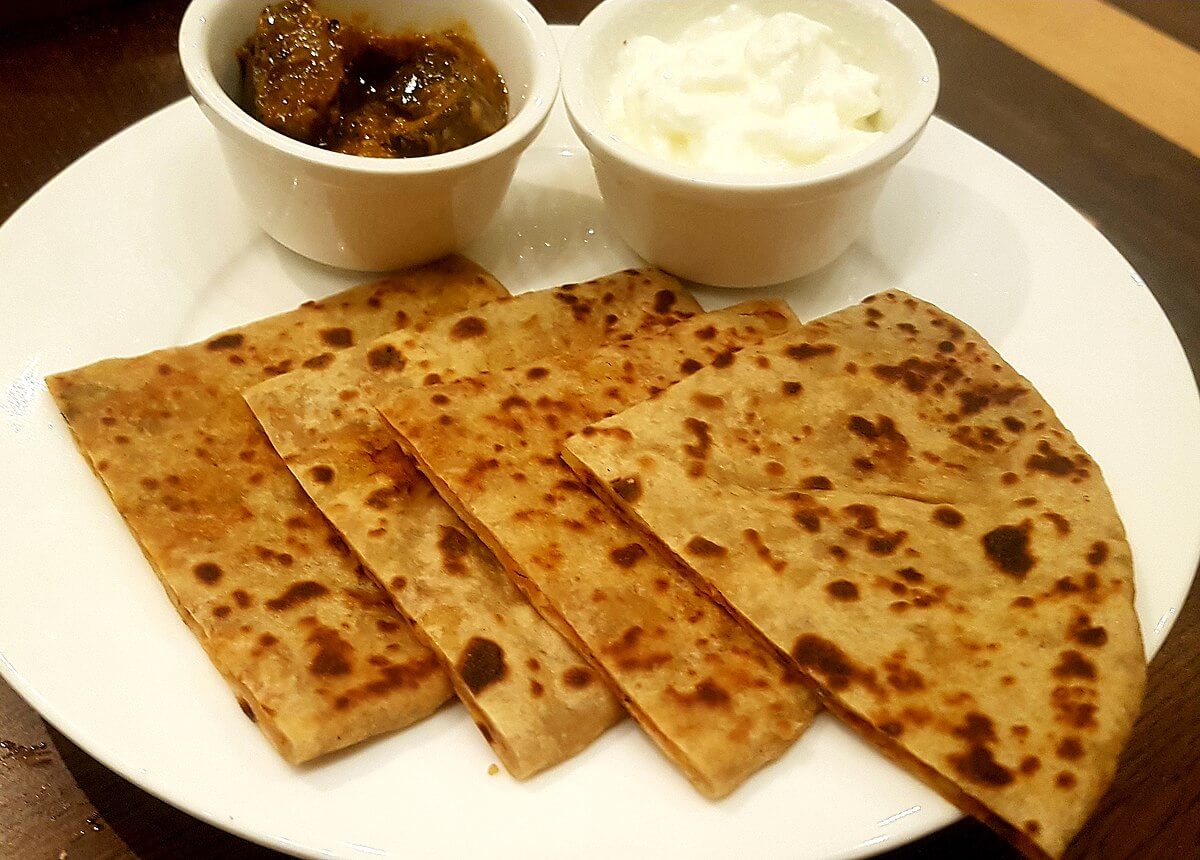
Qeema Naan: A traditional flatbread stuffed with a spiced minced meat filling (Qeema). The dough for Naan is made with flour, yeast, salt, and water, rolled out, and filled with a cooked mixture of minced meat, onions, tomatoes, and spices like cumin, coriander, and chili powder. It’s then baked in a tandoor or on a griddle until it puffs up and gets a golden-brown crust, offering a delightful blend of flavors and textures.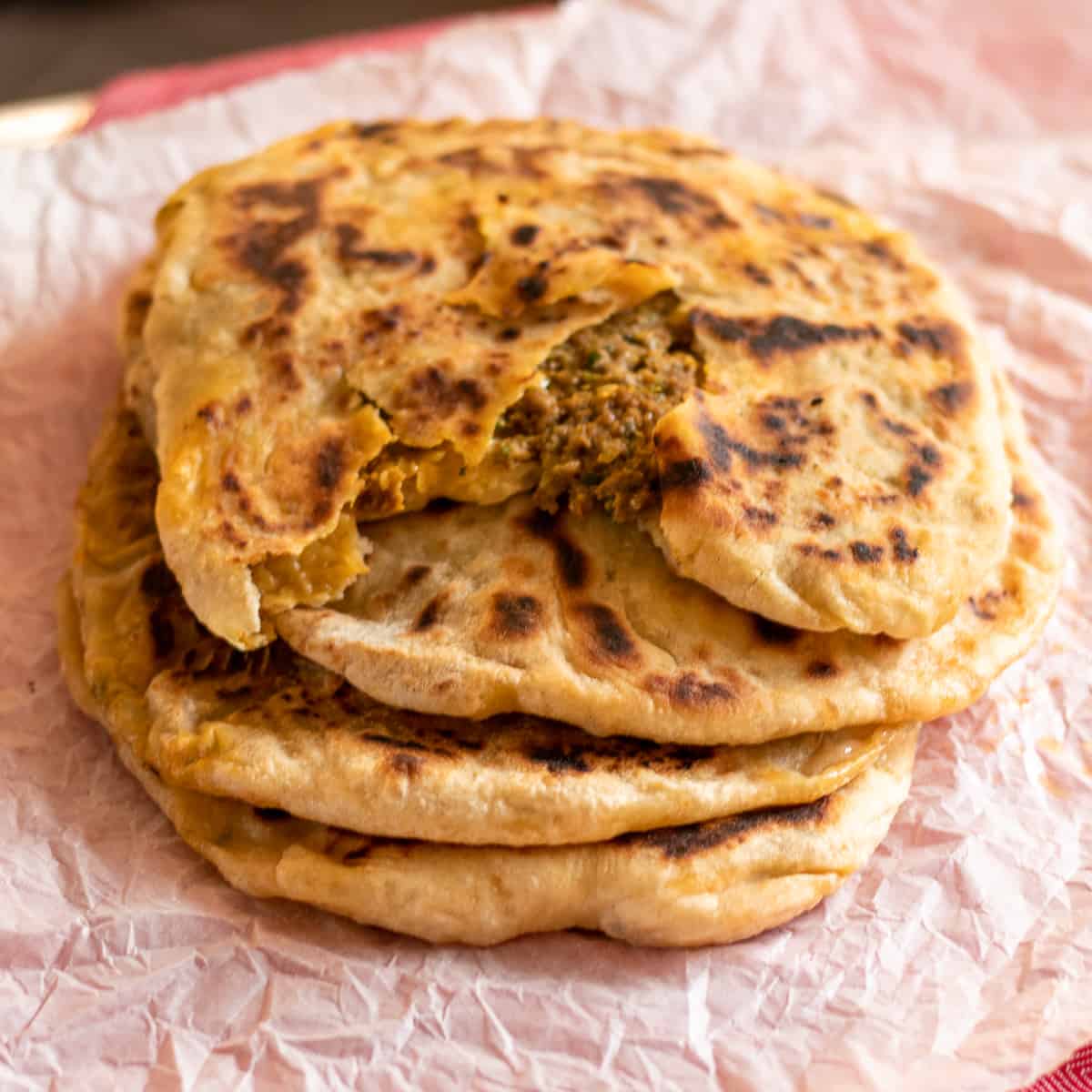
Saag: A hearty and nutritious dish made from leafy greens (often mustard greens or spinach) cooked with various spices like garlic, ginger, and green chilies. The greens are finely chopped and simmered with tomatoes, onions, and sometimes added ingredients like fenugreek leaves or cornmeal to thicken the consistency. It’s typically served with Makki di Roti, a flatbread made from corn flour, creating a classic Punjabi combination.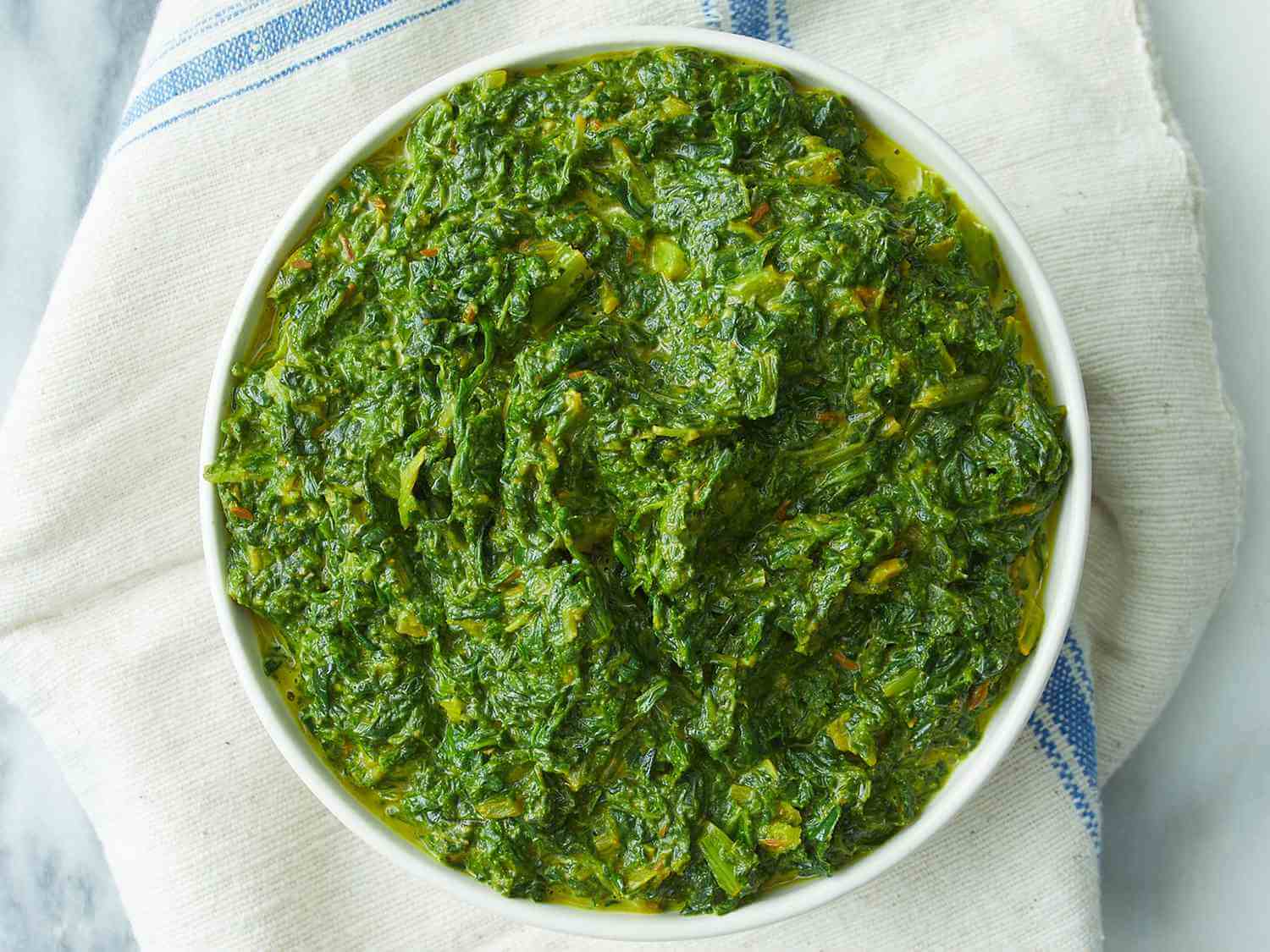
Sweets from Chaman Ice Cream: Chaman Ice Cream is renowned for its wide array of delectable sweets, including traditional Pakistani desserts like Gulab Jamun, Barfi, Jalebi, and Ras Malai. These sweets are made using ingredients such as milk, sugar, and flour, and are often flavored with cardamom, saffron, and nuts. Each sweet has its unique texture and sweetness, catering to various preferences.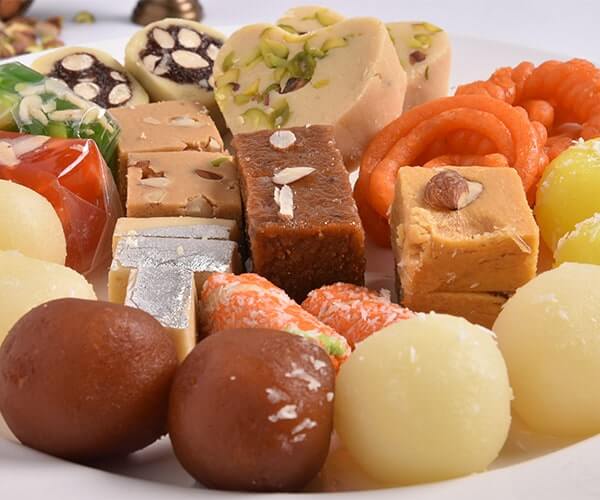
Aloo Tikki Chaat: A popular street food consisting of crispy potato patties (Aloo Tikki) served with a medley of sweet and tangy chutneys, yogurt, chickpeas, chopped onions, and spices like chaat masala. The potato patties are made by mixing boiled potatoes with spices, shaping them into patties, and shallow-frying until golden brown. The combination of flavors and textures creates a tantalizing burst of taste.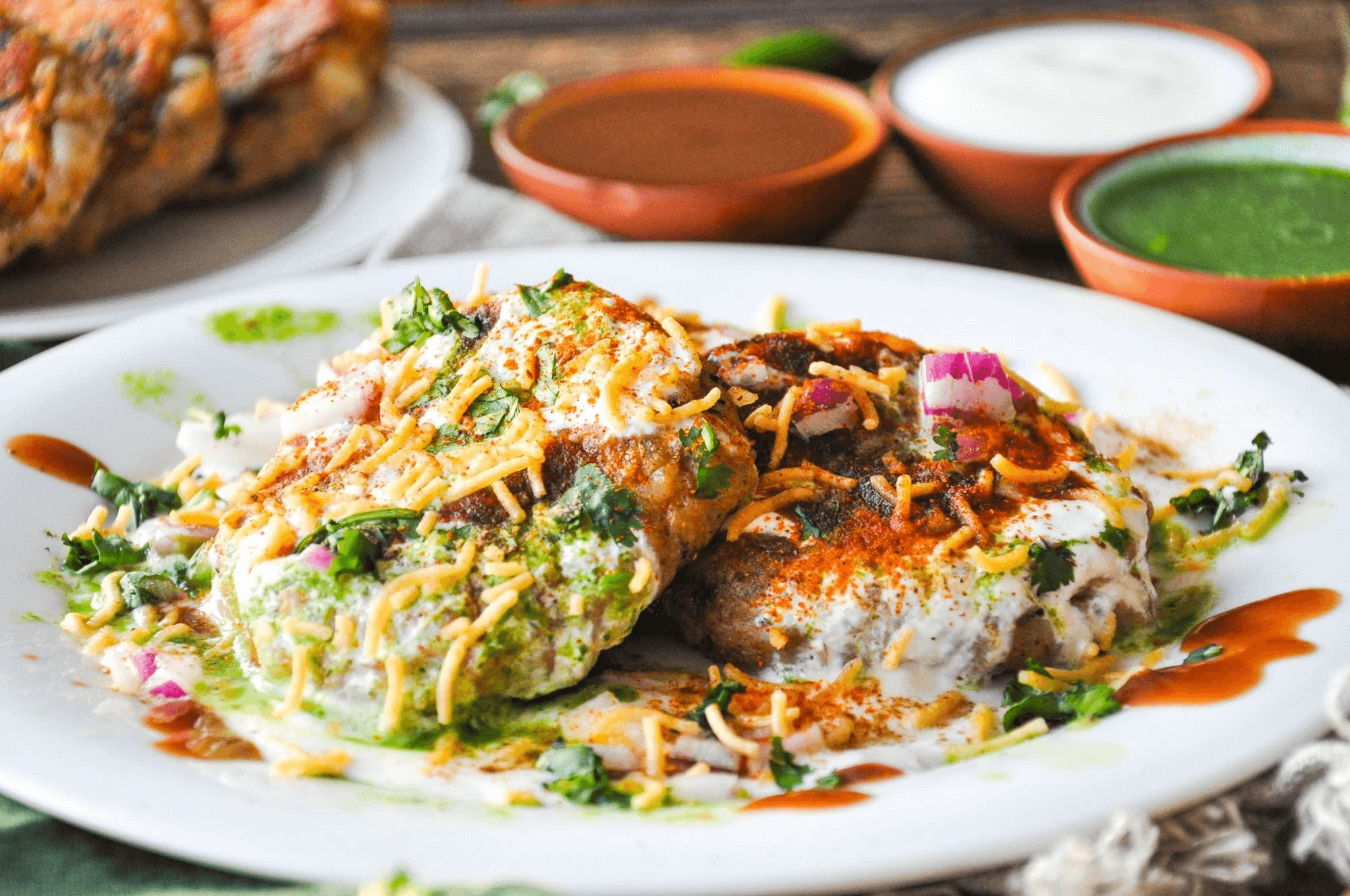
Zarda: A fragrant and colorful sweet rice dish cooked with ghee, sugar, saffron, cardamom, and nuts like almonds, cashews, and raisins. The rice is usually soaked in water and then cooked with these ingredients, giving it a rich yellow hue and a delightful aroma. Zarda is often served during celebrations and special occasions.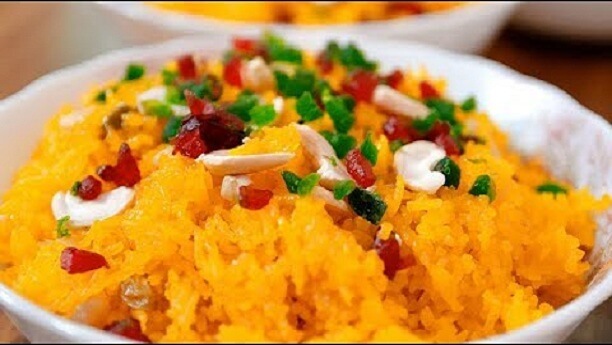
Fish Curry: A flavorful dish where fish pieces are simmered in a spiced gravy made from tomatoes, onions, garlic, ginger, and a blend of spices like turmeric, cumin, and red chili powder. The fish is cooked until tender, absorbing the savory flavors of the aromatic curry, creating a delightful seafood dish.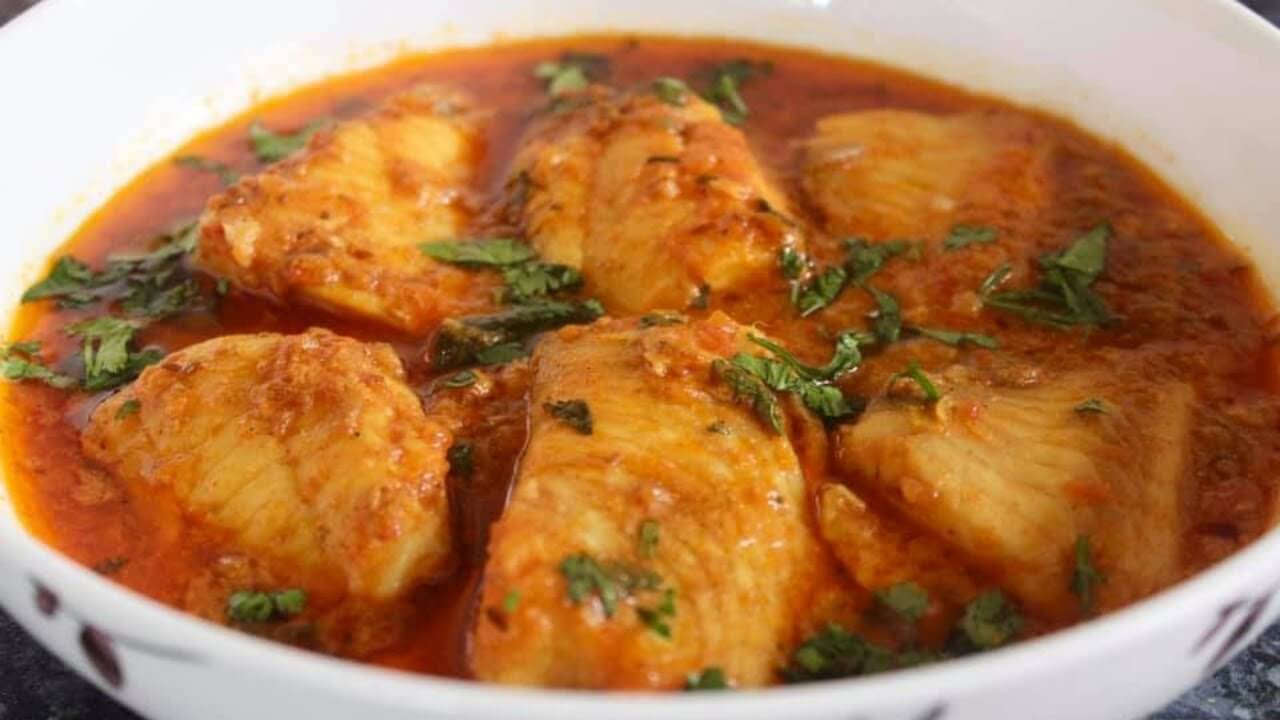
Haleem: A thick and nourishing stew made by slow-cooking a mixture of lentils, wheat, barley, and meat (often chicken or beef) with various spices and ghee. The ingredients are simmered for hours until they blend into a smooth and creamy texture. Haleem is garnished with fried onions, fresh ginger, and lemon, offering a comforting and fulfilling meal, especially during Ramadan.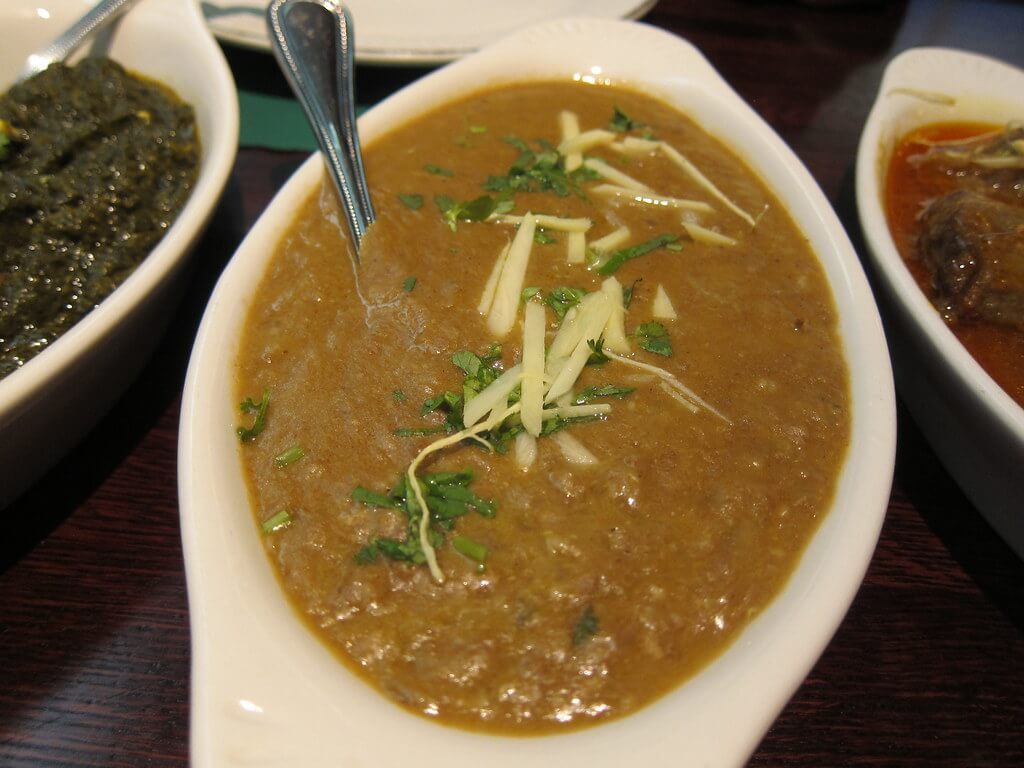
Fruit Chaat: A refreshing and tangy fruit salad made from a mix of seasonal fruits like apples, bananas, oranges, pomegranates, and sometimes cucumbers. The fruits are diced and tossed together with a dressing made from lemon juice, chaat masala, and sometimes black salt, creating a zesty and flavorful snack or side dish.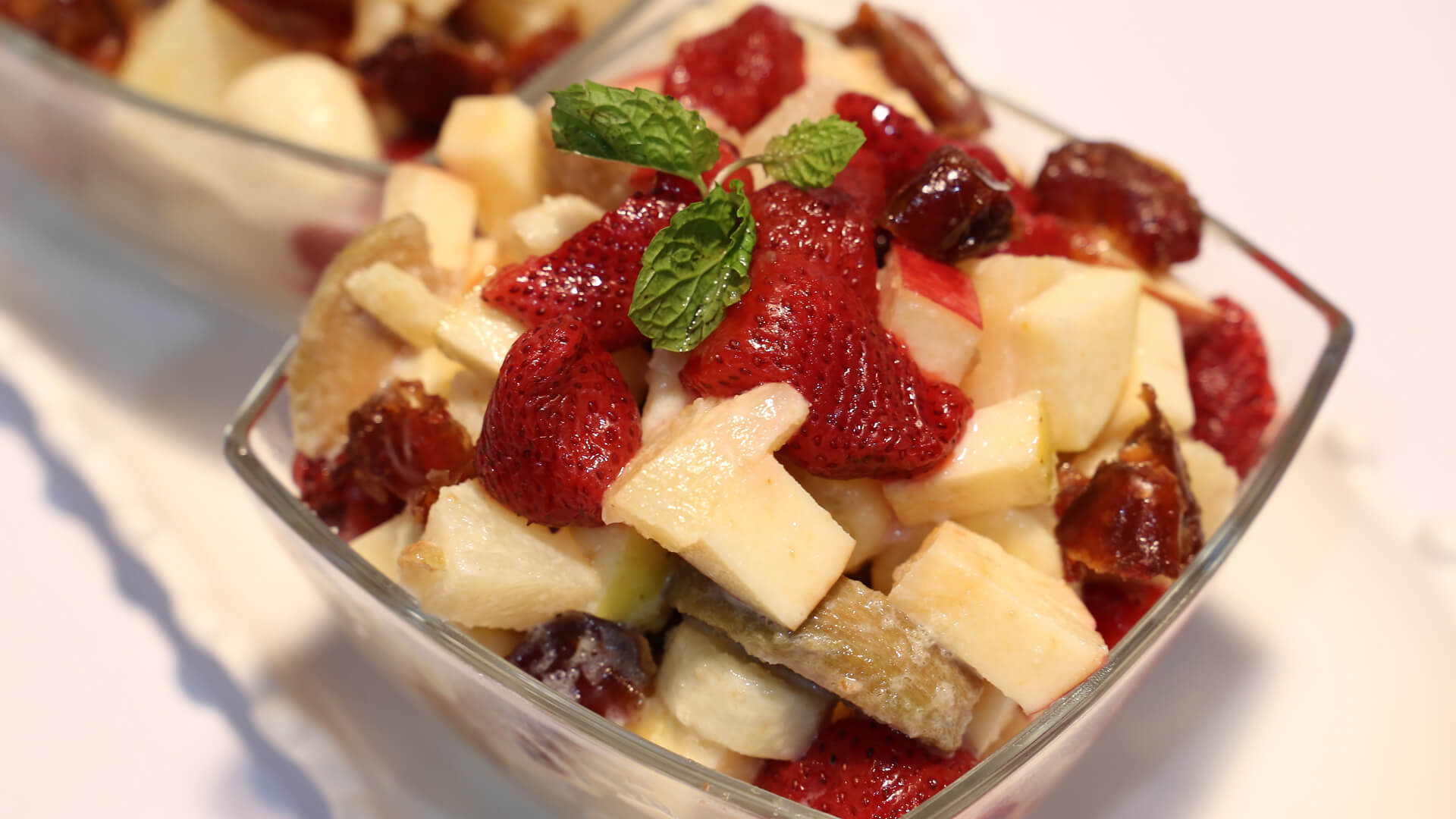
Gajar Ka Halwa: A classic Indian and Pakistani dessert made from grated carrots cooked with ghee, milk, sugar, and cardamom until it thickens and caramelizes. Garnished with nuts like almonds and cashews, Gajar Ka Halwa offers a delightful combination of sweet, creamy, and nutty flavors, often enjoyed during festivals and special occasions.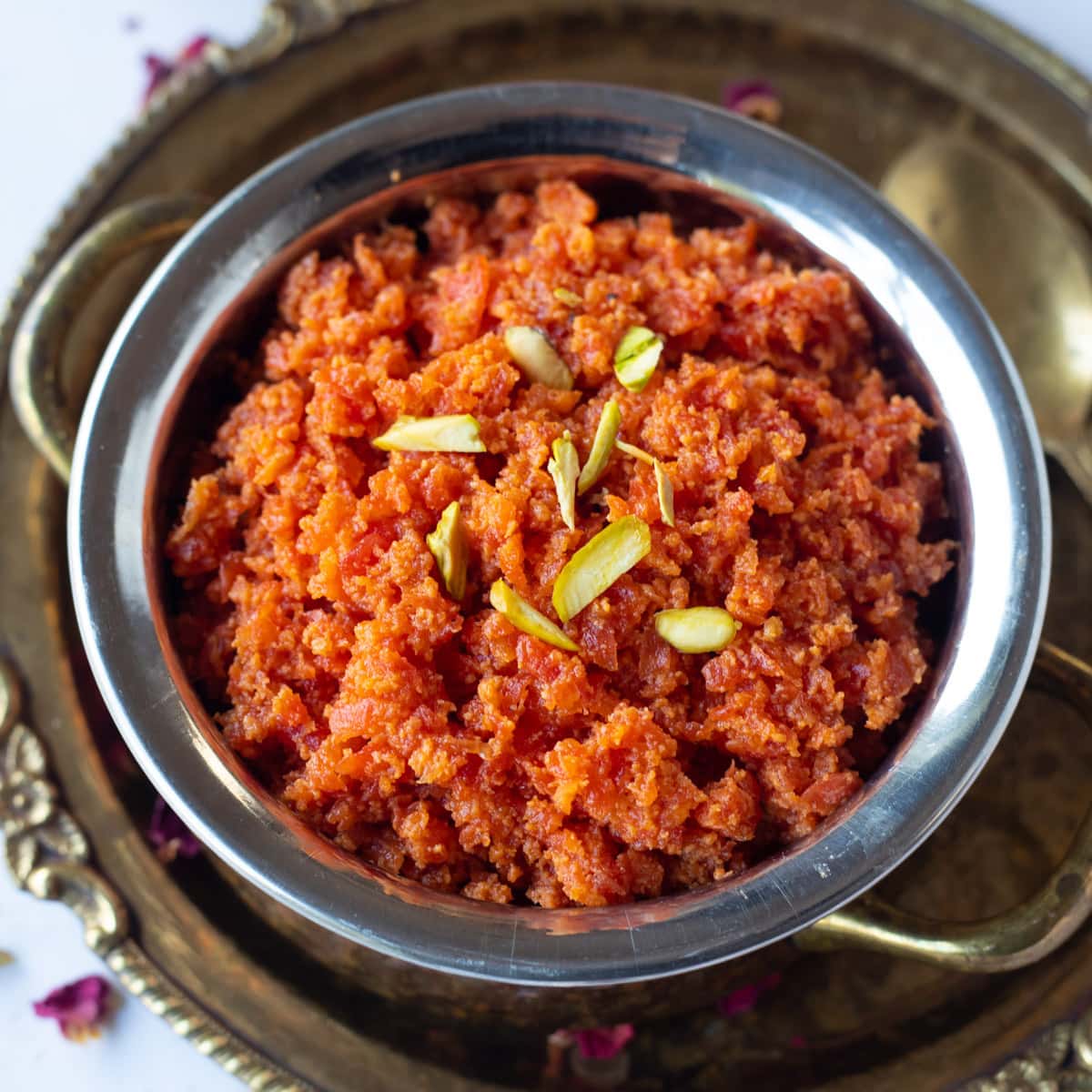
Nihari: A slow-cooked stew made from tenderized meat (often beef or mutton shank) simmered with spices like cinnamon, cloves, cardamom, and nutmeg, resulting in a rich and flavorful gravy. Nihari is traditionally cooked overnight on low heat to enhance the tenderness of the meat and the depth of the spices, creating a dish that’s savored with naan or rice.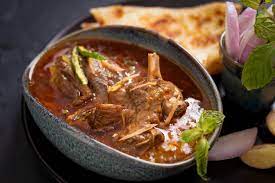
Biryani: A fragrant rice dish layered with marinated meat (chicken, mutton, or beef), aromatic spices, fried onions, and saffron-infused milk. The rice and meat are cooked separately before being layered and cooked together in a sealed pot, allowing the flavors to meld and create a tantalizing mix of savory and aromatic elements.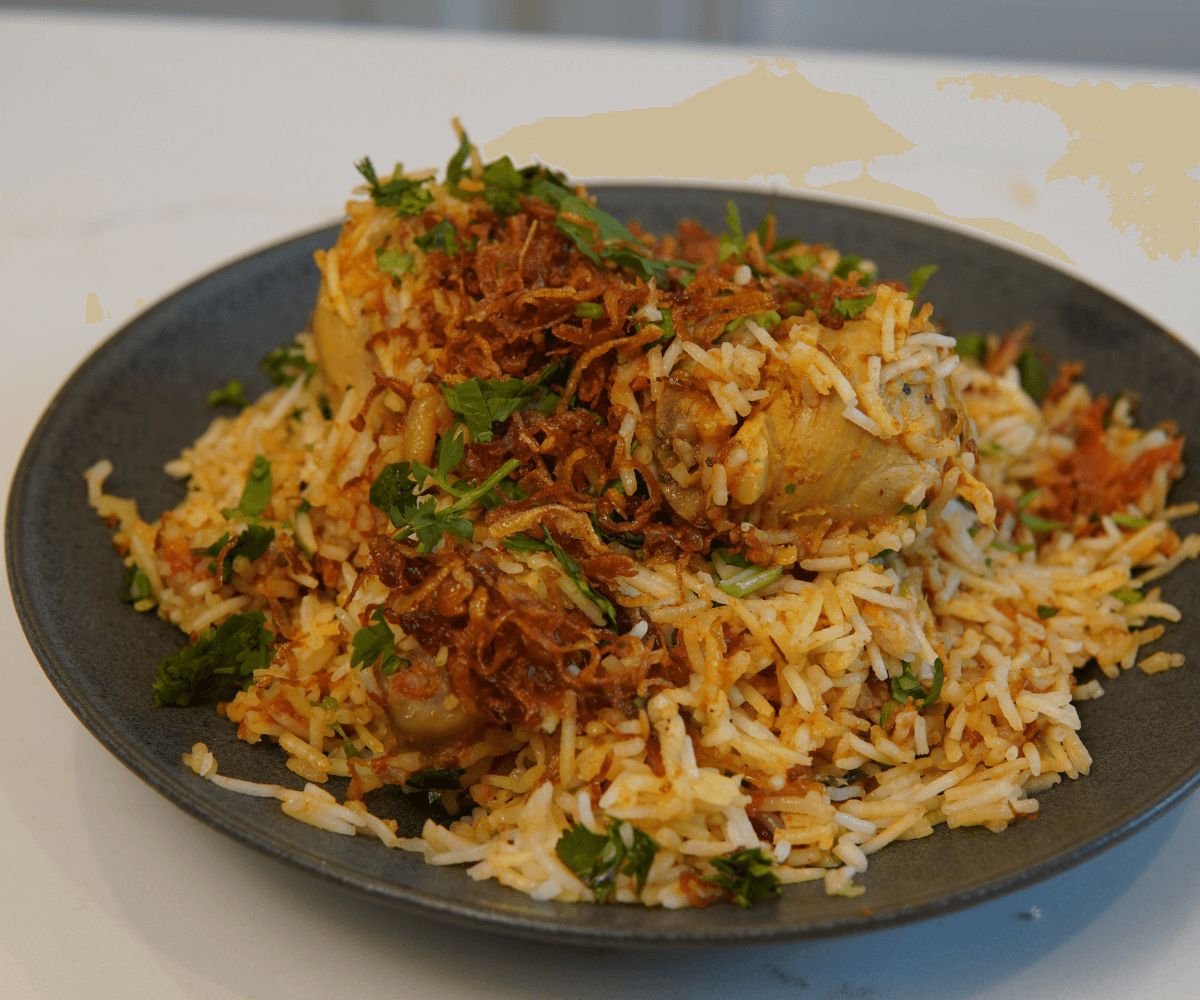
Puri: A deep-fried bread made from unleavened dough consisting of wheat flour, salt, and water. The dough is rolled into small discs and then deep-fried until they puff up and turn golden brown. Puri is often served with savory or sweet accompaniments and is a popular choice for breakfast or as a side dish.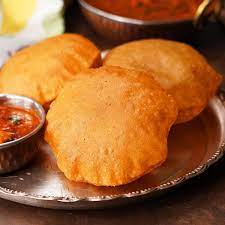
Chapli Kebab: These flavorful kebabs are made from minced meat (usually beef or mutton) mixed with various spices like coriander, cumin, chili powder, and pomegranate seeds, along with chopped onions, tomatoes, and fresh herbs like cilantro. The mixture is shaped into thin, round patties and shallow-fried until they develop a crispy exterior and juicy interior, offering a burst of aromatic flavors.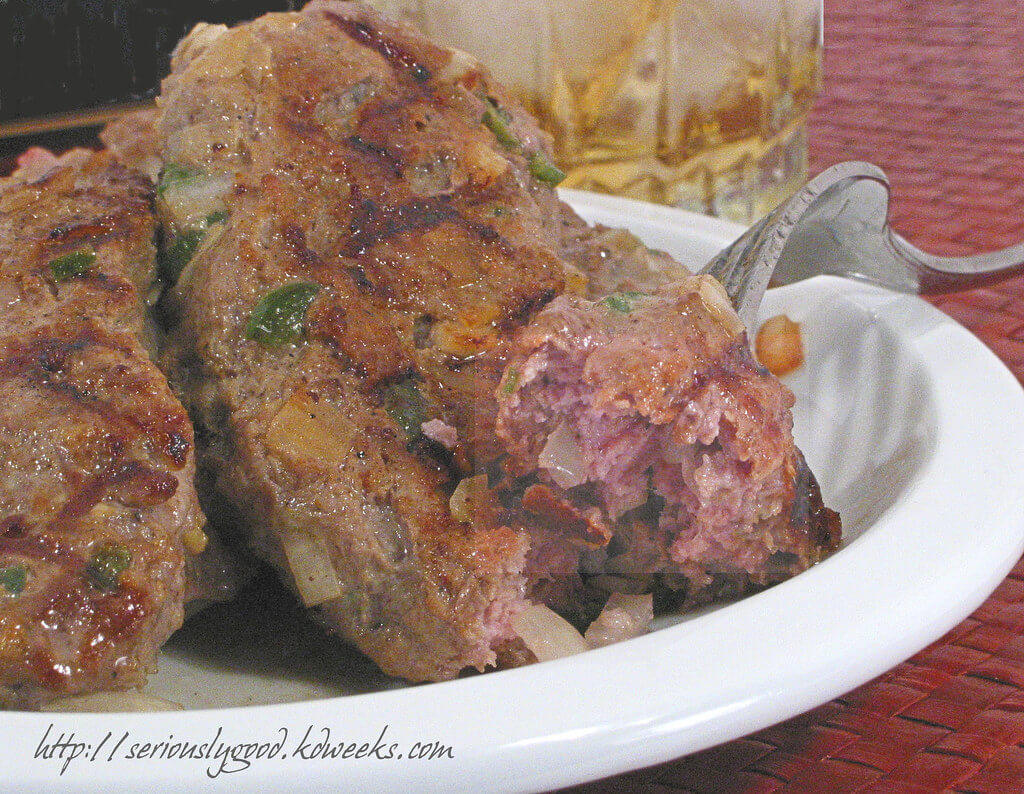
Chicken Tikka: Marinated chunks of chicken are skewered and grilled until tender and slightly charred. The marinade includes yogurt, spices like turmeric, chili powder, cumin, and ginger-garlic paste, which impart a tangy and spicy flavor to the succulent chicken pieces.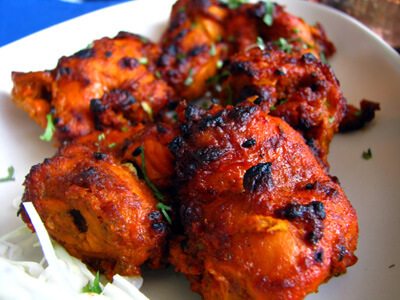
Balochi Sajji: A traditional dish originating from Balochistan, Sajji involves marinating a whole lamb or chicken with a blend of spices, including salt, red chili powder, and sometimes yogurt or lemon juice. It’s skewered and slow-roasted over an open flame or in a tandoor until the meat is tender and infused with the flavors of the spices, resulting in a succulent and flavorful dish.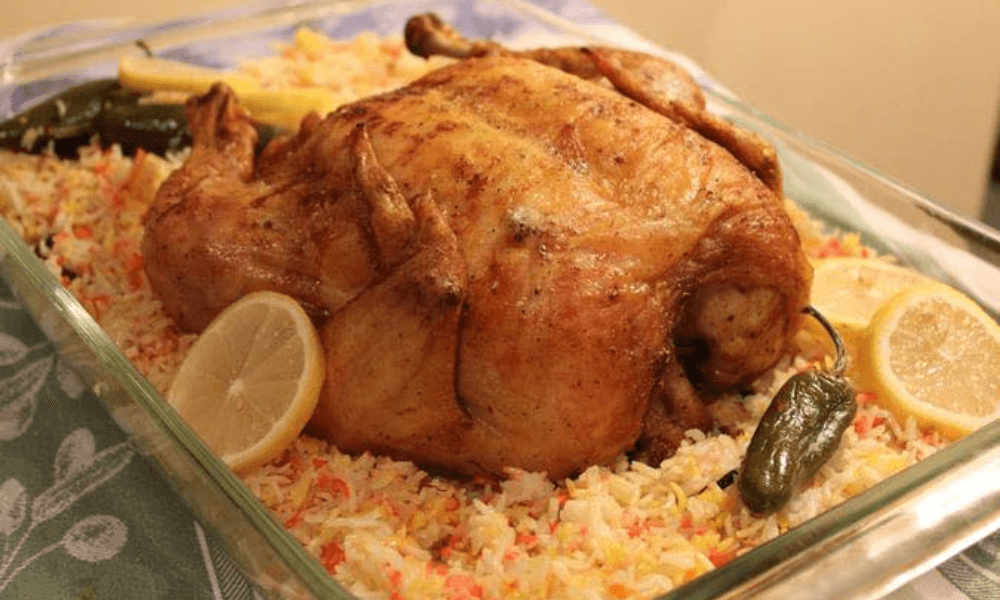
History and Culture
Culinary Influences and Origins
The gastronomic landscape of food in Bahawalpur stands as a testament to its rich historical influences and diverse cultural amalgamation. A tapestry woven with threads from various civilizations, Bahawalpur’s cuisine reflects a harmonious blend of indigenous traditions and foreign influences. The Mughals, Persians, and local Punjabi heritage have significantly shaped the culinary identity of this region.
The Mughal Empire’s opulent culinary practices infused Bahawalpur’s cuisine with rich flavors and intricate cooking techniques. Techniques like slow cooking and the use of a myriad of spices became integral to the evolution of Bahawalpur dishes. Persian influences brought in aromatic herbs, dried fruits, and the concept of kebabs, enriching the culinary repertoire. Additionally, the Punjabi influence introduced a love for hearty and robust flavors, emphasizing the use of locally sourced produce and simple yet flavorful cooking methods.
Traditional Cooking Techniques
The preparation of food in Bahawalpur resonates deeply with traditional cooking techniques that have been preserved over generations. Tandoor cooking, an ancient method involving a clay oven, plays a pivotal role in imparting smoky flavors to various dishes like Naan bread and Tandoori meats. Slow cooking over low flames is another cornerstone technique, enhancing the tenderness and depth of flavors in dishes like Nihari and Haleem. The art of Dum Pukht, a slow-cooking method where ingredients are sealed in a pot to allow slow, gentle cooking, is often employed in creating flavorful biryanis and curries. Furthermore, techniques such as hand-pounding spices and grinding grains using traditional stone mills contribute to the authenticity of Bahawalpur cuisine, preserving its essence and distinctive taste.
Evolution of Bahawalpur’s Signature Dishes
The evolution of Bahawalpur’s signature dishes is a narrative intertwined with history, cultural exchanges, and local innovation. Dishes like Sajji, a whole roasted lamb or chicken, showcase the influence of Balochi culinary traditions. Nihari, a slow-cooked stew, traces its origins to the Mughal era, originally a breakfast staple for laborers. The flavorsome Bhindi Gosht, a combination of okra and meat, exemplifies the fusion of Persian and Punjabi culinary elements. Each dish, with its unique blend of spices and cooking methods, narrates a story of evolution, adaptation, and preservation, symbolizing the diverse tapestry of food in Bahawalpur.
Ingredients
Unique and Essential Ingredients The distinctive flavors and aromas of food in Bahawalpur are intricately tied to a palette of unique and essential ingredients that form the backbone of its cuisine. Wheat, a staple grain, reigns supreme, forming the basis for various breads like Naan, Roti, and Paratha. The prominence of meat, especially lamb, beef, and chicken, reflects the region’s love for hearty and savory dishes like Sajji and Karahi. Rice, a versatile grain, takes center stage in biryanis and pulao, offering a delightful base for aromatic flavors.
Pulses and legumes such as lentils, chickpeas, and kidney beans play a crucial role in creating nourishing and wholesome dishes like Daal Chaawal and Cholay. The use of fresh and seasonal vegetables like okra (bhindi), spinach, and potatoes adds a delightful touch to stews, curries, and chaats. Additionally, dairy products like yogurt, ghee, and paneer feature prominently, adding richness and depth to various dishes.
Origins and Cultural Significance of Key Ingredients The origins and cultural significance of key ingredients in food from Bahawalpur carry tales of historical trade routes, indigenous farming practices, and cultural exchange. Spices like cumin, coriander, turmeric, and red chili powder have been intrinsic to Bahawalpuri cuisine for centuries, with their roots tracing back to ancient trade routes connecting the region to the Middle East and Central Asia. These spices not only impart distinct flavors but also hold medicinal and preservative properties, reflecting their multifaceted significance in local culinary practices.
Moreover, the cultural significance of certain ingredients like saffron, which adds a rich golden hue and an aromatic touch to dishes like Zarda, reflects opulence, celebration, and festivity within Bahawalpuri culture. Similarly, the use of cardamom, rose water, and kewra essence in desserts like Rabri and Gulab Jamun symbolizes hospitality and communal gatherings, where sweet treats are shared among friends and family.
Commonly Used Spices and Flavorings Spices and flavorings hold a paramount position in shaping the vibrant and robust flavors of food in Bahawalpur. Cumin seeds, with their earthy and nutty profile, form the base for many spice blends, adding depth to dishes like kebabs and curries. Coriander, known for its citrusy and fresh aroma, pairs harmoniously with various meats and vegetables, enhancing the overall flavor profile.
Turmeric, revered for its vibrant color and medicinal properties, features prominently in curries and rice dishes, infusing them with a warm and earthy essence. Red chili powder, whether mild or fiery, imparts the quintessential heat to Bahawalpuri dishes, creating a tantalizing balance of flavors.
Tips and Tricks
Best Time to Explore Local Eateries
Exploring the diverse and flavorful food scene in Bahawalpur requires an understanding of the best times to savor the culinary delights that the region offers. The bustling streets and local eateries come alive during evenings, especially during the cooler months, offering a vibrant ambiance filled with the aromas of sizzling kebabs, simmering curries, and freshly baked bread. The weekends, particularly Friday evenings, witness a heightened fervor in food markets and traditional eateries, presenting a perfect opportunity to indulge in a wide array of authentic Bahawalpuri dishes amidst the lively atmosphere.
How to Prepare Traditional Bahawalpuri Dishes at Home
Bringing the flavors of food in Bahawalpur to your own kitchen can be a delightful culinary journey. To replicate the authenticity of Bahawalpur dishes at home, start by sourcing fresh and quality ingredients, as they form the essence of these dishes. For instance, to prepare Sajji, marinate the whole lamb or chicken with a blend of spices like red chili powder, salt, and yogurt, ensuring the meat absorbs the flavors overnight. Cooking it slowly over a grill or in an oven is key to achieving tender and flavorful results.
For Nihari, the slow-cooking process is crucial. Simmer the meat with spices like cinnamon, cloves, and cardamom for several hours until it becomes incredibly tender and the flavors meld together. Similarly, dishes like Bhindi Gosht and Daal Chaawal require precise techniques to retain the freshness and individual flavors of the ingredients. Embrace the traditional methods, such as hand-pounding spices and slow cooking, to ensure an authentic taste reminiscent of Bahawalpur.
Etiquette and Customs When Dining Out
When immersing oneself in the food culture of Bahawalpur, understanding the local dining etiquette and customs is essential for a wholesome experience. Firstly, it’s customary to begin a meal with the greeting of “Bismillah” (in the name of God), reflecting the cultural reverence for food and gratitude. In traditional settings, dining often involves communal eating, where sharing dishes is a common practice, signifying hospitality and camaraderie.
Respect for elders and hosts is crucial, and it’s polite to accept offers of food or drink as a gesture of goodwill. Additionally, using the right hand for eating and refraining from pointing feet toward others are gestures of respect in Bahawalpur culture. Upon finishing a meal, expressing gratitude by saying “Shukriya” (thank you) is appreciated.
When dining out, especially in local eateries or street food stalls, embracing the casual and bustling environment while enjoying the flavorful dishes adds to the authenticity of the experience. Engaging with locals and vendors, appreciating their culinary skills, and relishing the diverse flavors with an open mind and heart enriches the journey into the food culture of Bahawalpur.
Sustainability and Local Sourcing
Importance of Locally Sourced Ingredients
In the realm of food in Bahawalpur, the emphasis on locally sourced ingredients not only celebrates the region’s agricultural bounty but also fosters sustainability and community connections. Locally sourced produce, such as fresh vegetables, fruits, and grains, holds immense significance as it promotes seasonal eating, ensuring that dishes are crafted using ingredients at their peak ripeness and flavor. This practice not only enhances the taste but also supports local farmers and reduces the carbon footprint associated with long-distance transportation of food items. Moreover, utilizing locally sourced meats and dairy ensures freshness, quality, and ethical practices, contributing to the authenticity and integrity of Bahawalpur cuisine. The embrace of indigenous ingredients reinforces cultural identity while fostering a sense of pride and sustainability within the local food system.
Restaurants and Markets Emphasizing Sustainability
Several restaurants and markets in Bahawalpur champion sustainability by prioritizing locally sourced and ethically produced ingredients, reflecting a commitment to preserving the environment and supporting local communities. Markets like the Bahawalpur Food Bazaar and the Old City Market are vibrant hubs teeming with stalls offering an assortment of locally-grown produce, spices, and artisanal products. These markets serve as platforms where farmers directly sell their harvest, ensuring fair prices and fostering a direct connection between producers and consumers.
Additionally, restaurants such as “Sustainable Spice Kitchen” and “Local Flavors Cafe” have emerged as pioneers in the promotion of sustainable practices within the food in Bahawalpur landscape. These establishments source their ingredients from nearby farms and suppliers, ensuring freshness while minimizing the ecological impact of food production. They prioritize eco-friendly practices, such as reducing food waste, using biodegradable packaging, and implementing energy-efficient cooking methods. Furthermore, some restaurants engage in community initiatives, organizing farmer’s markets or educational workshops to promote sustainable living and responsible consumption among locals and visitors alike.
Impact of Sustainable Practices on Bahawalpuri Cuisine
The integration of sustainable practices has had a profound impact on the essence and evolution of food in Bahawalpur. Embracing locally sourced, seasonal ingredients has heightened the authenticity of dishes, amplifying their natural flavors and nutritional value. The emphasis on sustainability has encouraged chefs and home cooks to rediscover traditional cooking techniques that align with environmental consciousness, such as preserving foods through fermentation or sun-drying, reducing reliance on artificial preservatives.
Pairings and Recommendations
Beverages that Complement Bahawalpuri Cuisine
Pairing beverages with the diverse and flavorful food in Bahawalpur adds an extra dimension to the culinary experience. Traditional beverages like Doodh Pati Chai (milky tea) are an integral part of the local culture, often enjoyed with breakfast or as a refreshing midday drink. Its robust flavor, enriched by spices like cardamom and cloves, complements savory dishes like Aloo Paratha or Daal Chaawal perfectly.
For those seeking non-alcoholic options, Lassi, a yogurt-based drink, provides a cooling contrast to spicy dishes. Sweetened Lassi pairs well with the heat of Chapli Kebabs or Karahi, while Salted Lassi enhances the flavors of rich gravies like Nihari or Haleem. Moreover, Nimbu Pani, a tangy lemonade infused with aromatic spices, serves as a refreshing accompaniment to street food delicacies like Aloo Tikki Chaat or Fruit Chaat.
For those indulging in Bahawalpur cuisine with an inclination towards alcoholic beverages, exploring local craft beers or traditional spirits can be an intriguing venture. The rich, malty flavors of craft beers complement dishes like Reshmi Kebabs or Malai Boti, enhancing the overall dining experience. Additionally, exploring fruit-based spirits or local wines can provide interesting pairings with the region’s diverse range of dishes.
Other Dishes or Restaurants to Explore in the Region
Apart from the iconic dishes that epitomize food in Bahawalpur, exploring other culinary gems and restaurants in the region unveils a treasure trove of flavors and experiences. “Tandoori Tastes” is a renowned restaurant known for its delectable tandoori specialties, including Tandoori Chicken and Seekh Kebabs. The authentic flavors and charcoal-infused aroma of their dishes offer a delightful insight into the essence of Bahawalpur cuisine.
For those seeking diverse flavors, “Spice Boulevard” offers a fusion of traditional and contemporary dishes, infusing innovative culinary techniques with classic recipes. Their inventive take on fusion foods like Masala Pizza and Kebab Wraps showcases the adaptability and versatility of Bahawalpur cuisine while appealing to modern palates.
Exploring local food markets like “The Spice Bazaar” or “Chaman Ice Cream and Sweets” provides a glimpse into the vibrant street food culture of Bahawalpur. From sizzling Chapli Kebabs to aromatic Zarda and a myriad of savory and sweet treats, these markets offer an immersive and sensory-rich experience for food enthusiasts.
Fusion Foods or Innovations in Bahawalpur Cuisine
In recent years, the food in Bahawalpur has seen innovative fusion creations that blend traditional flavors with contemporary culinary techniques, appealing to diverse tastes. Restaurants like “Desi Delights Fusion Kitchen” and “Global Spice Hub” have introduced fusion dishes that harmoniously combine Bahawalpuri elements with international cuisines, catering to cosmopolitan palates while preserving the essence of local flavors.
One such innovation is the fusion of traditional Sajji with global barbecue techniques, resulting in succulent Sajji-inspired grilled meats marinated in international spice blends. Additionally, the adaptation of classic desserts like Gajar Ka Halwa into ice cream flavors or incorporating local spices into gourmet dishes showcases the versatility and adaptability of Bahawalpur cuisine to modern gastronomic trends.
Cultural Significance
Rituals and Traditions Associated with Food
Food in Bahawalpur is deeply intertwined with rituals and traditions, forming an integral part of social and cultural gatherings. The act of sharing meals holds immense significance, symbolizing hospitality, unity, and communal bonds within families and communities. Traditional feasts, such as weddings and religious celebrations like Eid, are marked by elaborate spreads featuring a plethora of Bahawalpur dishes. The preparation of these meals often involves collective efforts, where family members come together to cook, fostering a sense of togetherness and kinship.
Moreover, certain rituals are associated with specific dishes. For instance, the preparation of Sajji, a celebratory dish, signifies joyous occasions like festivals or important milestones. The slow roasting of the whole lamb or chicken over an open flame embodies a communal celebration, where the aroma of roasting meat permeates the air, drawing people together in festivity.
Food as a Reflection of Bahawalpur Culture
Food in Bahawalpur serves as a mirror reflecting the region’s rich heritage, diverse influences, and deep-rooted cultural values. Each dish encapsulates the historical narrative of the region, showcasing a blend of flavors influenced by Mughal grandeur, Persian aromatics, and indigenous Punjabi simplicity. The emphasis on hospitality, generosity, and respect for guests is evident in the abundance and variety offered during meals, portraying a culture that values sharing and communal dining experiences.
Additionally, food in Bahawalpur is a testament to the region’s agrarian roots and reverence for the land. The reliance on locally sourced produce, seasonal ingredients, and traditional cooking techniques not only sustains the authenticity of the cuisine but also pays homage to the agricultural heritage ingrained in Bahawalpur culture. Furthermore, the significance of spices and flavors, carefully balanced in dishes, reflects the artistry and attention to detail embedded within the culinary traditions, resonating with the region’s penchant for intricacy and finesse.
Impact of Globalization on Local Food Culture
The advent of globalization has introduced both challenges and opportunities to the traditional food in Bahawalpur. While it has facilitated the exchange of culinary ideas and ingredients, leading to the integration of diverse flavors and cooking styles, it has also brought about a shift in dietary preferences and eating habits. The influence of fast food chains and global cuisines has introduced alternative dining options, altering the consumption patterns and taste preferences among the younger generation.
Moreover, globalization has led to the adaptation of Bahawalpur cuisine to suit international palates, resulting in fusion foods and modern interpretations of traditional dishes. While this evolution adds dynamism to the culinary landscape, there is a growing concern about preserving the authenticity and heritage of Bahawalpur cuisine amidst the wave of globalization. Efforts to strike a balance between embracing innovation and safeguarding cultural identity are crucial in ensuring that the essence and traditions of food in Bahawalpur remain an integral part of the region’s cultural heritage.
Conclusion
In the vibrant tapestry of Bahawalpur culture, the significance of “food in Bahawalpur” stands as a cornerstone, weaving together history, traditions, and flavors that define this region’s culinary heritage. As one explores the diverse array of dishes, it becomes evident that Bahawalpuri cuisine is more than just a collection of recipes; it’s a reflection of centuries-old cultural exchanges, embodying the fusion of influences from various civilizations.
The richness of Bahawalpur cuisine lies not only in the meticulous use of spices or intricate cooking techniques but also in the communal rituals and traditions associated with dining. Every meal becomes an opportunity for shared experiences, a testament to the region’s hospitality and cultural warmth. From the aromatic flavors of Sajji to the savory delights of Daal Chaawal and the sweet indulgence of Rabri, each dish encapsulates a story, a tradition, and a slice of Bahawalpur culture.
Yet, as globalization continues to shape the culinary landscape, Bahawalpur cuisine finds itself at a crossroads between preserving its authenticity and embracing contemporary influences. The impact of globalization has introduced new flavors, altered eating habits, and fostered innovative fusion foods. While this evolution adds diversity, it also poses a challenge in safeguarding the intrinsic identity of “food in Bahawalpur.”
However, the resilience of Bahawalpur culture and the commitment to sustain local traditions and sourcing practices offer hope for the preservation of this culinary heritage. The emphasis on locally sourced ingredients, communal dining rituals, and the celebration of indigenous flavors serve as pillars anchoring the authenticity of Bahawalpur cuisine.
As we conclude this gastronomic journey through Bahawalpuri cuisine, it’s evident that food isn’t merely sustenance; it’s a cultural legacy, a reflection of identity, and a means to celebrate unity amidst diversity. The enchanting flavors and culinary traditions of food in Bahawalpur continue to be an enduring testament to the region’s rich heritage and the enduring spirit of its people.

